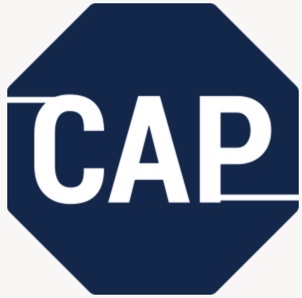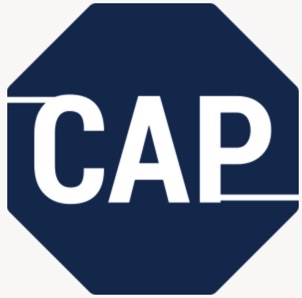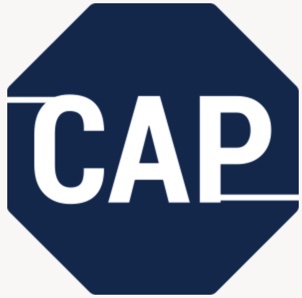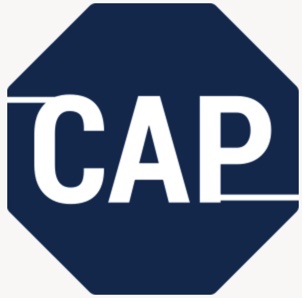Contents
- About ABC
- Eligibility Criteria
- Application Information
- Accreditation Programs
- Accreditation Survey
- Accreditation Survey Process
- Accreditation Decisions
- Accreditation Fees
- Maintaining Your Accreditation
- Complaint Process
- Announcing and Promoting Your Accreditation
- Accreditation Standards and Compliance Tips
- Administrative Standards (AD)
- Human Resources (HR)
- Patient Care and Management (PC)
- Product Safety (PS)
- Patient Records (PR)
- Performance Managementand Improvement (PM)
- Facility Safety and Management (FS)
- Claims and Billing Compliance (CB)
- Resources
- Patient Care Accreditation Pre-Application Checklist
- Additional Resources Just for You
©2025 by the American Board for Certification in Orthotics, Prosthetics & Pedorthics, Inc. All rights reserved.
No part of this document may be produced in any form without written permission of the American Board for Certification in Orthotics, Prosthetics & Pedorthics, Inc.
Patient Care Facility Accreditation Guide
October 2023
Human Resources (HR)
The Human Resource Standards applies to all personnel at the facility’s physical location, whether directly employed, contracted or those serving in a volunteer capacity providing patient care services or supporting activities.
The terms staff and staff member (and their derivatives) as used in these Standards are intended to refer to the facility’s various types of care providers and support staff. The facility ownership/leadership has the responsibility for appointing and privileging its staff. The appointments and privileges must be based upon the staff member’s competency to perform the necessary skills for the functions and procedures associated with that appointment. You must manage the competencies and qualifications of contracted services and personnel in the same manner that you manage the competencies and qualifications of direct employees and volunteers.
You can define in the contract, or in written policy, criteria for performance of the contracted service; or, you can review and adopt the contracted business’s policies and practices. The contract should specify that the contracted business would provide only qualified staff based on their education, training, licensure and competence as defined by the business. Contracted entities are subject to the same eligibility requirements as employees and volunteers. Facility management will be held ultimately accountable for the actions of its contractor’s staff and volunteers.
The Human Resource Standards are applicable to any contracted service that provides any element of care or service, which is eligible for survey. They do not apply to delivery of home medical equipment and pharmaceutical products via a contracted common carrier (i.e. UPS, FedEx, US Postal Service, local courier companies), where there is no education or set-up involved. The Standards, however, do apply when delivery is provided by a direct employee of the business or a contractor of the business not excluded in this paragraph.
HR.1
Your business must have human resource policies and procedures that address employee duties and responsibilities.
These policies must include:
1. Detailed job descriptions that list personnel qualifications and training requirements
2. Required certifications and/or licenses
3. Required experience
4. Continuing education requirements that are consistent with the items and services you provide
HR.2
You must annually document that you have verified current licenses and certifications held by all staff members who provide patient services.
Tip
The licenses and certifications held by all patient care providers must be verified annually. You can do this by contacting the issuing agency (licensure or certification board) and requesting verification that the individual’s credentials are still valid. This can be done via phone, email or by checking the agency’s website. Once acquired, the verification should be documented in the employee’s personnel file or another file specifically for this purpose. You should document the date and method by which verification was received. Use the Employee Verification form in the online Resource Kit to document your review.
HR.3
You must have orientation and training programs to familiarize all staff with your facility and procedures. This includes having appropriate reference materials and educational information available to all personnel.
Tip
It is important that you document staff participation in initial orientation or training as well as all ongoing and remedial training programs. Documentation could include a signed and dated list of participants and a copy of the agenda for the orientation or training session.
The orientation or training should include information to ensure that your staff understands your emergency preparedness and evacuation programs and procedures. The orientation or training materials should be available to all personnel. You could have copies made for each staff member or have master copies in a location accessible to all staff.
HR.4
You must verify that your staff has completed continuing education consistent with the services and items they provide and are in compliance with their credentialing organization, as applicable.
Tip
You must document staff participation in continuing education that is relevant to their patient care duties. This continuing education may include in-service programs, manufacturer sponsored courses or courses provided by other sponsors. You can document participation with in-service sign in sheets and agendas, course certificates or official continuing education statements such as those provided by ABC to credentialed individuals (MCE Statement). The documentation should be kept either in staff continuing education records or each individual staff member’s personnel file. Use the Assessment of Employee Continued Competency in the online Resource Kit to document your review.
HR.4.1

When required by state licensure, staff providing patient care must be licensed by the orthotic, prosthetic and/or pedorthic licensure body and function within their licensure scope of practice.
Tip
You must provide a current copy of any required state licenses. Your patient care records must indicate, with notes and signatures, that care is being provided by licensed staff.
HR.4.2

In the absence of state licensure requirements, staff providing custom fitted prefabricated or custom fabricated items and services shall be certified as appropriate and function within the ABC Scope of Practice.
Tip
Your patient records and office policies must demonstrate that personnel providing these services are certified. You must provide copies of their current certifications. Your patient care records must indicate by notes and signatures that care is being provided by the appropriate certified staff.
HR.5
You must meet all CMS (Medicare) requirements for the items and services provided and for the employment of specialty personnel.
Tip
The business must meet all requirements described on the CMS 855S form. You must have current W-2 or 1099 forms for all staff. These forms should be maintained in their personnel file or another file specific to this purpose.
HR.6

You may privilege certified or licensed staff to provide patient care beyond their defined scope of practice under the supervision of a certified or licensed individual practicing within their scope of practice. If you privilege a staff member, your process must be in compliance with applicable laws, based on Written Objective Criteria* and under the Indirect Supervision* of a certified or licensed individual practicing within their scope of practice.
*See definition of Written Objective Criteria and Indirect Supervision in the ABC Scope of Practice.
Tip
Certified or licensed staff can be privileged to provide items or services beyond their scope of practice. However, you must document that you have established Written Objective Criteria to assess the competency of each person. Use the Individual Privileging Record template and the Instructions for Establishing Privileging Criteria in the online Resource Kit for help with this standard.
This documentation may take different forms, including but not limited to, proof of completion of continuing education courses related to particular devices, documented in-house or inservice training that is specific to the items or services that the patient care provider is being privileged to provide and/or documented specific work experience participating in patient care activities.
You will need written documentation for each privileged patient care provider describing what criteria they met and how they met it. A log of items or services the individual has been privileged to provide is not considered Written Objective Criteria. The supervisor’s co-signature must appear in all patient documentation.
HR.6.1
If you utilize Support Personnel* to participate in patient care tasks related to custom fitted prefabricated or custom fabricated orthoses, prostheses and pedorthic devices, those tasks cannot include patient assessment, formulation of the treatment plan, final fitting and delivery and any follow-up care that modifies the function of the device as originally prescribed. Any tasks delegated to Support Personnel must be done under Direct Supervision*.
*See definitions of Support Personnel and Direct Supervision in the ABC Scope of Practice.
Tip
Only non-critical patient care tasks may be delegated to non-credentialed Support Personnel. The certified or licensed caregiver must be physically on-site while the care is being provided and is responsible for documenting the care in the patient’s record.
HR.7
You must provide and document performance reviews of your staff at least annually. These reviews must provide your staff with feedback on competency and opportunities to improve performance related to the items and services they provide.
Tip
During those reviews, you will need to provide all of your staff with feedback on their competency and areas for improvement, if needed. For each staff member that provides patient care, you need a way to document their continued competency as it relates to specialized equipment, items and services.
You can measure their continued competency through patient satisfaction surveys, continuing education related to specialized equipment, items and services or other performance management data. You can document the ways in which each care provider maintains their competency through proof of completion of continuing education courses, documented in-house training, in-services and/or documented specific work experience.
These appraisals are to be documented in their personnel file or another file specifically maintained for that purpose. Use the Employee Performance Evaluation form in the online Resource Kit to document your review.
HR.8
Your delivery and set up staff must be competent to deliver and train patients on the use of specialized equipment.
Tip
You must be able to demonstrate the competency of the technical personnel who deliver, setup and train patients on specialized equipment. You must first establish Written Objective Criteria for assessing their competency. You should use the manufacturer’s guidelines for delivery and setup in establishing your competency criteria.
Each technician should have a competency assessment document that lists each criteria measured for competency and how they were met. Tools for assessing competency may include ride-along supervision, patient satisfaction survey results, continuing education courses, manufacturer’s training courses and/ or supervised on-the-job training. Your patient records must document that delivery, setup and patient education/training have taken place. Use the Instructions for Establishing Privileging Criteria and Individual Privileging Record template in the online Resource Kit for this standard.
HR.8.1
You must have a policy that describes the qualifications and competencies of all staff that deliver specialized equipment, training and home assessment.
Tip
All delivery personnel must be qualified to provide training on the delivered equipment and to perform a home assessment. You must first establish Written Objective Criteria for assessing competency as referenced in the tip for HR.8. Each individual should have a competency assessment document as referenced in the tip for HR.8.
HR.8.1.2
You must have a policy that lists the qualifications and competencies of the staff that train patients on the proper care, use and maintenance of the specialized equipment provided.
Tip
Your policies and procedures must list the qualifications and competencies you require of all individuals who deliver equipment on your behalf. Written Objective Criteria and competency assessment must be established as outlined in the tip for HR.8.1. Patient records must document that patient education and training on the proper care, use and maintenance of the delivered equipment have taken place.
HR.8.2

If you provide complex rehabilitative technology, you must have at least one Rehabilitative Technology Supplier (RTS) available to service each location. In addition to the RTS, you may also employ other trained technicians to service each location.
Tip
A qualified RTS must have one of the following credentials:
- Assistive Technology Professional (ATP)
- Certified Rehabilitative Technology Supplier (CRTS)
A trained technician is identified by all of the following:
- Factory trained by manufacturers of the products supplied by the company
- Experienced in the field of Rehabilitative Technology (e.g., on-the-job training, familiarity with rehabilitative clients, products and services)
- Complete, at least annually, ten hours of continuing education specific to Rehabilitative Technology
- Ability to program and repair sophisticated electronics associated with power wheelchairs, alternative drive controls and power seating systems
Your personnel files or other records must contain documentation of the above requirements.
HR.8.3

If you provide respiratory equipment, supplies and/or services, you must provide services in compliance with the current version of the American Association for Respiratory Care Practice Guidelines.
Tip
Patient care records must demonstrate compliance with the American Association for Respiratory Care Practice Guidelines (rcjournal.com). Copies of the Guidelines must be readily available for your staff.






